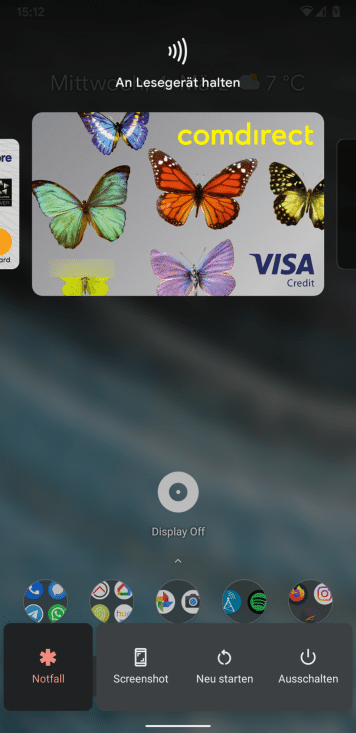So-called feature drops will upgrade Google Pixel smartphones in the future. Most functions land on the Pixel 4 and also on its predecessors.
The Dark Mode introduced with Android 10 can now be switched on and off with a tap of a button in the Quick Settings. Alternatively, Android automatically switches to dark mode at sunset and back again in the morning.
The power menu, which is opened by pressing the on / off button for a longer time, will in future contain quick access to the credit cards and flight tickets stored in Google Pay. If the latter does not automatically land in Google Pay using the confirmation email, you can now add them manually using a screenshot.

The new rules compete with tools such as Tasker – at least something: based on the location or the connected WLAN, the phone automatically switches to quiet, vibrates or changes to the “do not disturb” mode.
In addition, the update brings 169 new emojis and AR effects for Google Duo, which adapt to your own facial expression thanks to AI. According to Google, these new functions will be available on generation 2 to 4 pixel devices.
Exclusive
The Pixel 4 and 4 XL have been given a new gesture for the Motion Sense gesture control, with which you can pause and resume music playback – this drop does not work with older pixels due to the lack of motion sense hardware. Google also wants to have the automatic adjustment of the display brightness improved exclusively for the Pixel 4. Compared to other high-end smartphones, the Pixel 4 only scored average in terms of maximum brightness. In the future, additional reserves will be temporarily activated in direct sunlight. In addition, auto accident detection, which automatically dials the emergency call, will in future not only be available in the United States, but also in Canada, Australia and the United Kingdom.
The feature drop comes piggyback with the security patches for March and should be available to all users at the latest when this issue is published.
Android 11 in the starting blocks
The Pixel Phones are among the first devices to receive new Android versions in addition to regular updates. In mid-February, Google released the first pre-release version of Android 11.
After registering for the Android beta program, it is not automatically sent to the phone as an over-the-air update; instead, you have to download a suitable system image for pixel models 2 to 4 and flash it manually on your smartphone.
Visually there is not much new to discover. As is common with early previews of Android, Google first lays the foundation for new APIs so that app developers can adapt to them at an early stage.
Among the under-the-hood functions is, among other things, that the connectivity API under Android 11 also recognizes a bandwidth limitation in 5G networks and determines the basic bandwidth of the up- and downstream, which means that developers can stream and reload large amounts of data – for games, for example. Android 11 also brings improvements to the handling of rounded displays at the corners and round display cutouts for the front camera.
The notification bubbles, such as those used by Facebook Messenger, are more visible. They were originally supposed to move in with Android 10 and were withdrawn at short notice.
Security and privacy
In terms of security and privacy, improvements were made to the scoped storage introduced with Android 10. The sandbox principle of the internal storage is expanded to the shared storage or SD card: Apps can no longer access any data there either. The API innovations suggest that an app must first ask the user for the necessary authorization for extended access. Speaking of authorization: Users of Android 11 can only grant sensitive access, such as to the camera, location and microphone, once.
With Android 10, Google has created the Project Mainline so that new functions reach all users as quickly as possible. It ensures that individual operating system components can be updated via the Google Play services independently of the rest of the overall system. Android 11 doubles the number of mainline modules to 22.
As with previous Android releases, several previews and subsequent public beta versions of Android 11 are expected before the system is likely to make its way to the public in late summer or autumn. A first beta version and the announcement of new user features should be expected in May. ( spo )
